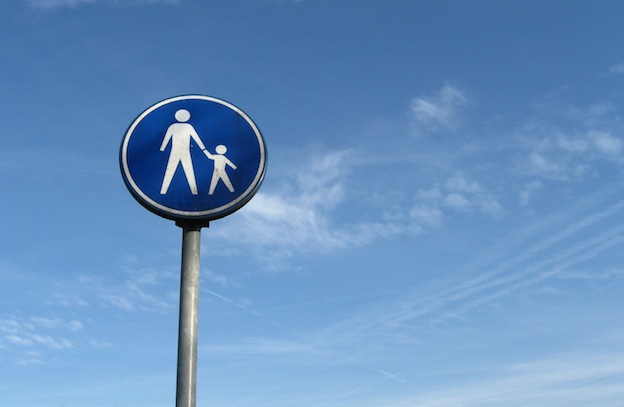SingaporeMotherhood | Parenting
March 2014
Managing Challenging Behaviour in Toddlers

For many parents, the first toddler meltdown around the age of two marks the beginning of a battle of wills between parent and child.
As your child grows and strives for independence, the desire to assert his will may result in a display of challenging behaviour.
Fortunately, the task of guiding your child through this stage of life does not have to be unpleasant. At the Early Childhood Parenting Conference held last November, Ms Freda Sutanto, a psychologist at KK Women’s and Children’s Hospital (KKH), shared these strategies on how to manage your child’s challenging behaviour. Our writer, who attended the talk, found it extremely useful and thought to share what she learnt from it.
[banner][/banner]
Challenging Behaviour at Different Ages
Understanding the development of a child as he grows from a toddler into a pre-schooler can help parents to deal with difficult behaviour appropriately.
18 months to 3 years
This is a stage of “emerging independence”. During this period, a toddler is driven to assert himself and to communicate his likes and dislikes. “No!” or “Me do it!” may be frequently heard. As he has not learnt to control his emotions, he may throw tantrums and bite or strike out when he is frustrated.
What to do Strike a balance between establishing control and discipline while giving him room to explore. Set clear limits and routines for him to follow, but allow him to make simple choices, such as choosing between two outfits or two types of snacks.
3 to 4 years
At this age, your child may begin to test limits. He also learns that his behaviour can affect others and have consequences. Some children may also lie, steal or argue.
What to do Maintain a consistent discipline standard that all care givers can uphold. This way, your child will learn to respect his boundaries and be less likely to challenge them. As your child’s language skills develop, teach him to express himself and communicate instead of behaving aggressively when he does not get what he wants.
5 to 6 years
A child at this age may test limits by being defiant or stubborn. Other difficult behaviours include talking back or being bossy. This is a stage where your child’s self-esteem is developing and he may be sensitive to criticism.
What to do Identify the underlying cause of his behaviour and respond to his needs. Reduce incidences of challenging behaviour by helping your child to develop social and emotional skills.
The ABCs of Behaviour Management
The Antecedent-Behaviour-Consequence (ABC) model is a useful tool for understanding and managing your child’s behaviour. Applied in the context of positive parenting, changing the ABCs can be effective in dealing with challenging behaviour.
A: Positive Parenting
Positive parenting can be described as a parenting style whereby children share a close relationship with their parents and have predictable interactions with them.
This approach to parenting may reduce challenging behaviour as parents are role models for their children, teaching them how to manage their emotions and relate with others. Through spending quality time with their children, parents can give them opportunities to relate their experiences and help them to vocalise their emotions.

Parents can also teach their children problem-solving skills, such as identifying the problem and thinking of possible solutions, instead of reacting in anger or frustration. Older children can be guided to consider the consequences of their actions.
Establishing a routine and structure in a child’s life also reduces the incidences of conflict as the child knows what is expected of him and his limits for certain activities, such as playing computer games.
While discipline is necessary when a child misbehaves, Ms Susanto does not encourage the use of physical punishment (defined as any “physical contact that causes pain”). Rather, she believes that discipline can be in the form of removing privileges or a time-out.
B: Understanding the Antecedent-Behaviour-Consequence (ABC) model
In dealing with challenging behaviour (the “B” in the ABC model), we have to first examine the antecedent to understand what had triggered the behaviour.
The consequence of the child’s behaviour would determine if he will repeat such behaviour. If his behaviour resulted in a negative consequence to him, he is less likely to repeat it. Here’s an example of how to analyse a situation using the ABC model:
– Antecedent: What happens before the behaviour is exhibited
– Behaviour: The action or challenging behaviour
– Consequence: What happens after the behaviour occurs
For example:
A: Girl drops the ice-cream which she had been eating
B: Girl cries
C: Father buys another ice-cream for her
By changing either A, B or C in the model, we can avoid or reduce the incidences of challenging behaviour.
The ABC Model at Work
Changing the ANTECEDENT
Have you ever wondered why your child may respond to one parent’s instructions but ignore the other’s? Change the manner in which you give an instruction (the “antecedent”) to get a better response. Ms Susanto suggests:
• Give short, specific instructions. Say “turn off the television and come to the bathroom”, instead of “hurry up and shower”.
• Time your instructions. Wait till the TV show is over before instructing your child to shower. Give five to 10 seconds for your child to comply, and check if he needs help to carry out your instructions.
Gain your child’s attention by getting to their level (eye-to-eye) and getting them to focus on you before giving instructions. Confident body language on your part works better than shouting instructions across the room.
Changing the BEHAVIOUR
In some instances, it is possible to tell your child clearly what behaviour is unacceptable, and to instruct him on an alternative behaviour.
To do this, give specific instructions instead of general statements such as “You’re being naughty”. Examples of specific, positive instructions include:
• “Do not draw on the wall. Colour in your colouring book instead.”
• “Stop running and walk slowly to Mummy.”
• “Do not snatch the toy. Say ‘May I have it please?’”
Changing the CONSEQUENCES
You can use positive consequences to motivate your child to behave. Examples of positive consequences:
• Give specific praise immediately after your child has shown good behaviour. You could say “It was nice of you to ask your sister for the ball” instead of a saying a vague “Good boy”.
• Reward your child each time he changes a challenging behaviour. This may be in the form of stickers (to be collected and exchanged for a toy) or access to the television, computer games, or playground.
When all else fails, let your child know in advance that there are consequences for bad behaviour. You can introduce consequences such as:
• Removing desired objects or activities, such as restricting access to computer games or the television.
• Allowing your child to face the natural consequences of his action. For example, if he throws tantrums until playtime is over, he misses out on his playtime.
• Sending an older child for “time-out” to reflect on his behaviour. A general guideline is one minute for every year of his age. For instance, a five-year-old would do “time-out” for five minutes. Only start timing after your child has stopped crying.
• “Planned ignoring”. This is done when your child uses bad behaviour to gain your attention. To do this, you need to give him a warning first. If his behaviour persists, tell him that you are ignoring him because of that behaviour. Expect his behaviour to get worse as he tries to get your attention. If you stand your ground, he will realise that he cannot succeed by behaving badly.
All content from this article, including images, cannot be reproduced without credits or written permission from SingaporeMotherhood.
Follow us on Facebook, Instagram, and Telegram for the latest article and promotion updates.






